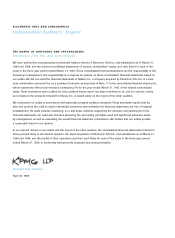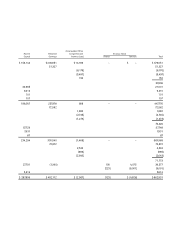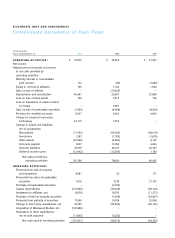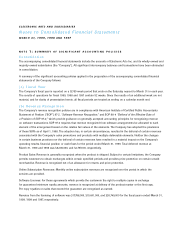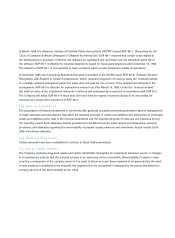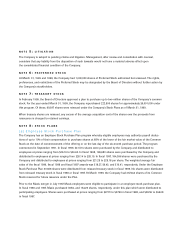Electronic Arts 1999 Annual Report Download - page 29
Download and view the complete annual report
Please find page 29 of the 1999 Electronic Arts annual report below. You can navigate through the pages in the report by either clicking on the pages listed below, or by using the keyword search tool below to find specific information within the annual report.
NOTE 1 (CONTINUED)
(c) Cash and Investments
Cash equivalents consist of highly liquid investments with insignificant rate risk and with maturities of three months or less
at the date of purchase. Short-term investments include securities with maturities greater than three months and less than
one year, except for certain investments with stated maturities greater than one year. Long-term investments consist of
securities with maturities greater than one year.
The Company accounts for investments under Statement of Financial Accounting Standards No. 115, “Accounting for
Certain Investments in Debt and Equity Securities,” (“SFAS 115”). The Company’s policy is to protect the value of its invest-
ment portfolio and to minimize principal risk by earning returns based on current interest rates. Management determines
the appropriate classification of its debt and equity securities at the time of purchase and reevaluates such designation
as of each balance sheet date. Debt securities are classified as held-to-maturity when the Company has the positive intent
and ability to hold the securities to maturity. Securities classified as held-to-maturity are carried at amortized cost, which
is adjusted for amortization of premiums and accretion of discounts to maturity. Such amortization is included in interest
income. Debt securities, not classified as held-to-maturity, are classified as available-for-sale and are stated at fair value.
Securities sold is based on the specific identification method.
(d) Prepaid Royalties
Prepaid royalties consist primarily of prepayments for manufacturing royalties, original equipment manufacturer (OEM)
fees and license fees paid to celebrities and professional sports organizations for use of their trade name. Also included in
prepaid royalties are prepayments made to independent software developers under development arrangements that have
alternative future uses. Prepaid royalties are expensed at the contractual royalty rate as cost of goods sold based on actual
net product sales. Management evaluates the future realization of prepaid royalties quarterly and charges to income any
amounts that management deems unlikely to be realized through product sales. Royalty advances are classified as current
and non-current assets based upon estimated net product sales for the following year. The current portion of prepaid
royalties, included in other current assets, was $35,057,000 and $20,470,000 at March 31, 1999 and 1998, respectively.
The long-term portion of prepaid royalties, included in other assets, was $7,602,000 and $2,289,000 at March 31, 1999
and 1998, respectively.
(e) Software Development Costs
Research and development costs, which consist primarily of software development costs, are expensed as incurred.
SFAS No. 86 provides for the capitalization of certain software development costs incurred after technological feasibility
of the software is established or for development costs that have alternative future uses. Under the Company’s current
practice of developing new products, the technological feasibility of the underlying software is not established until
substantially all product development is complete, which generally includes the development of a working model. The
software development costs that have been capitalized to date have been insignificant.




